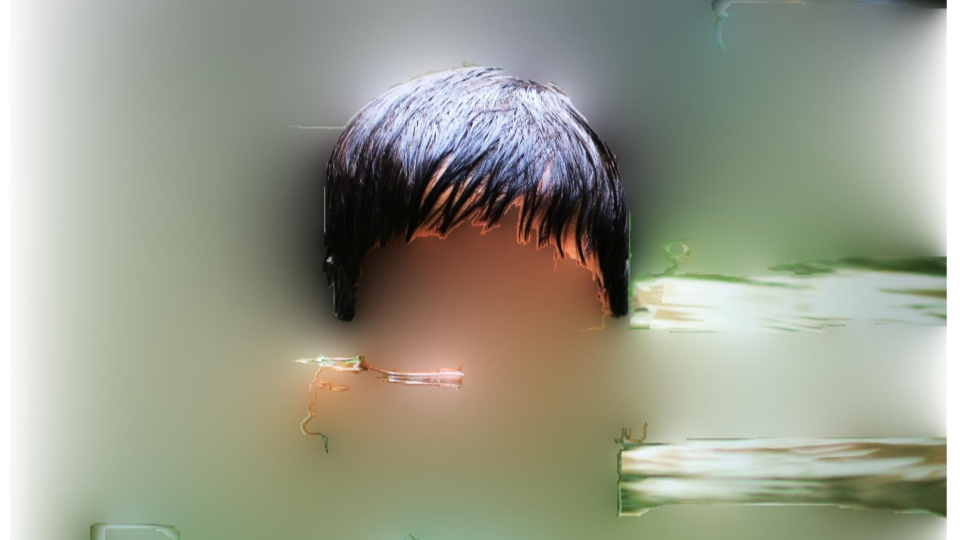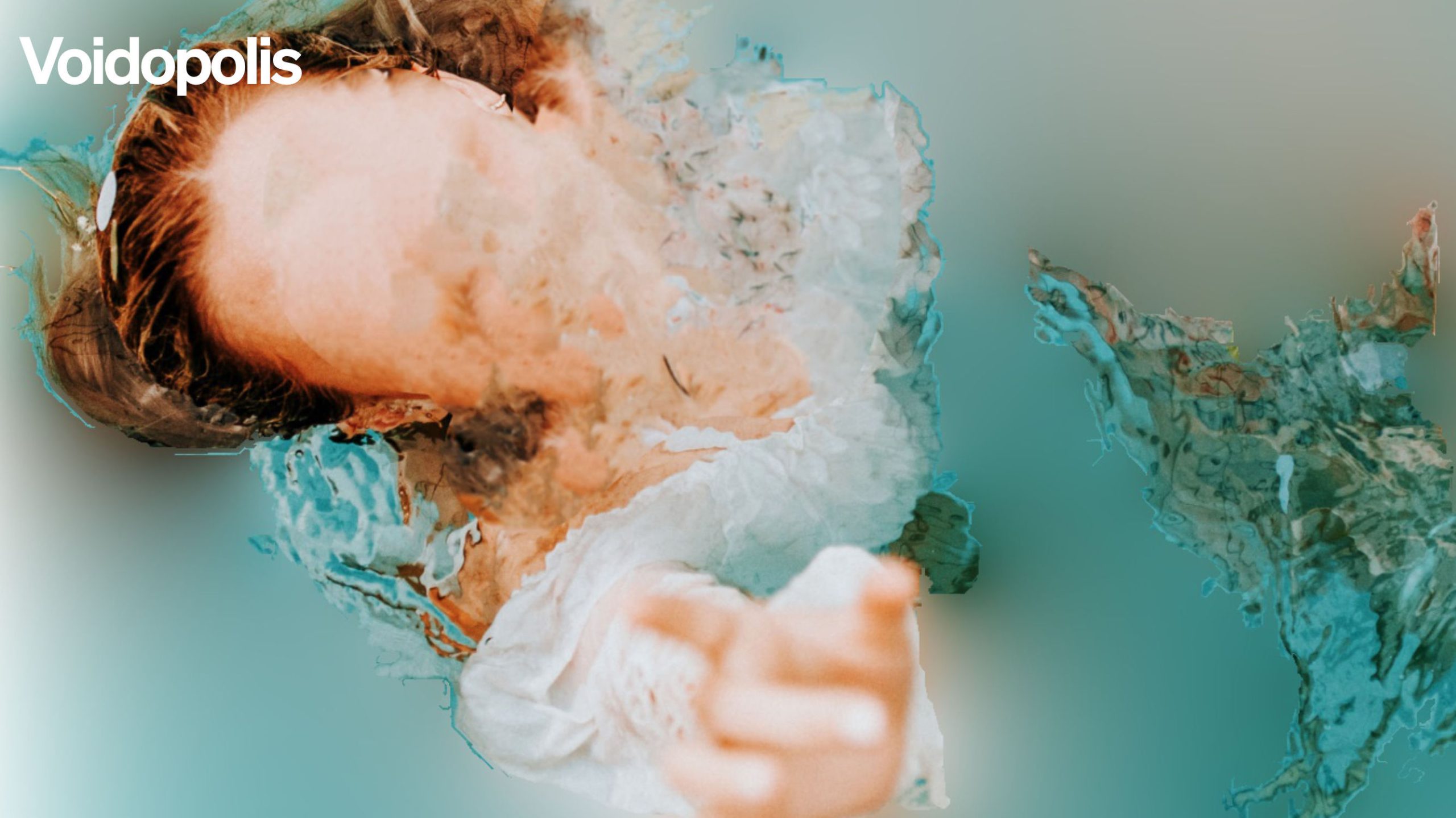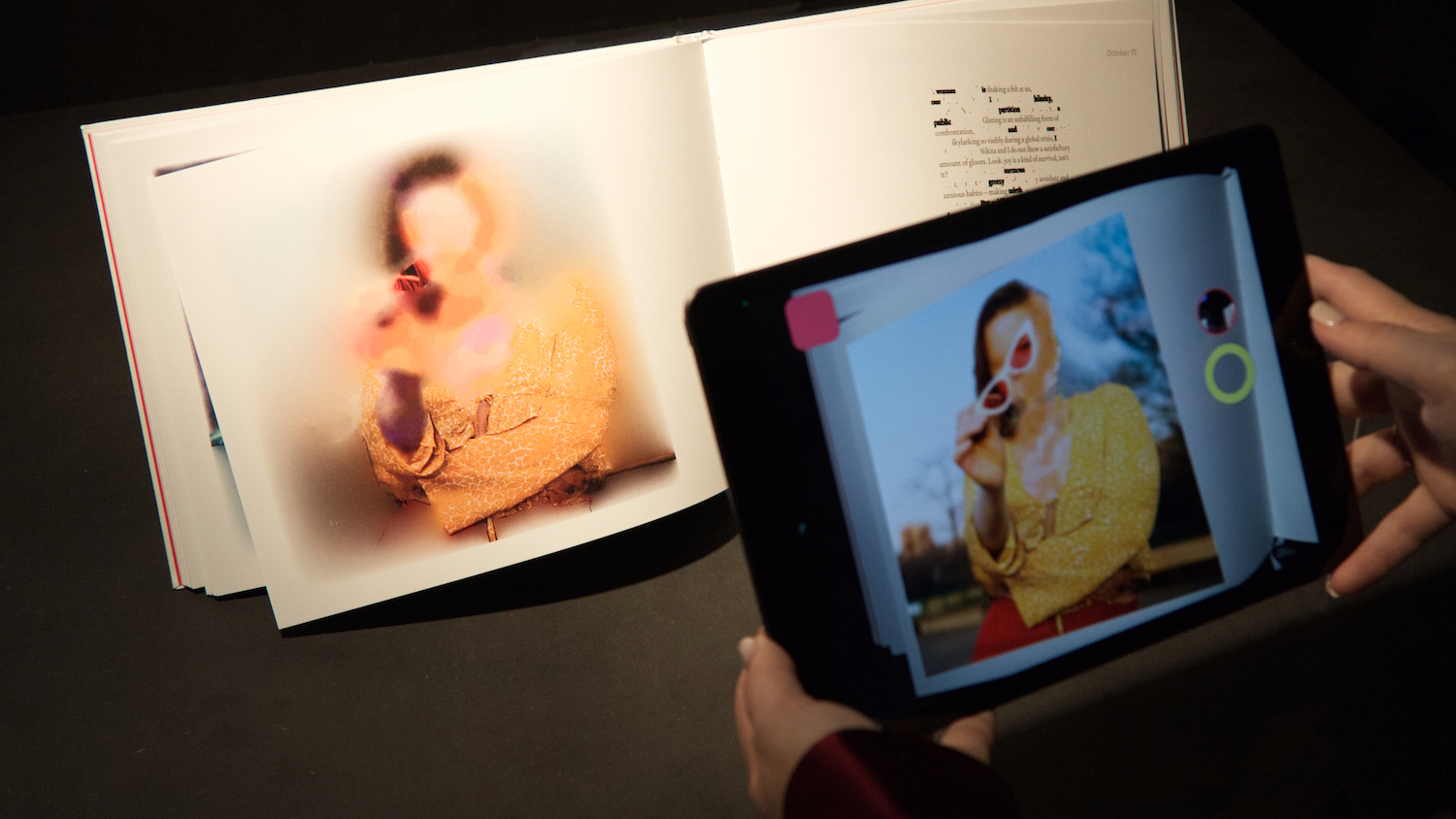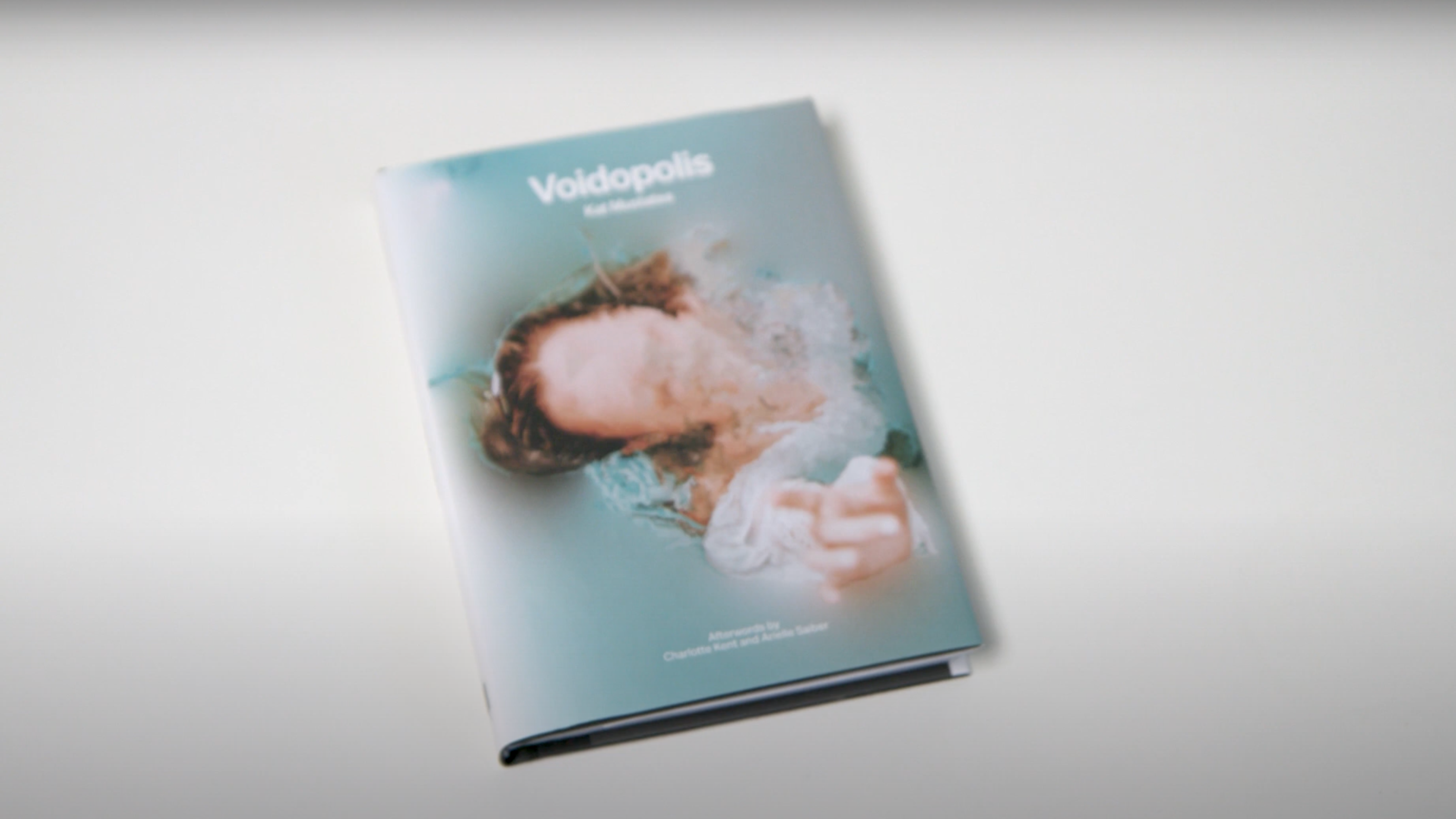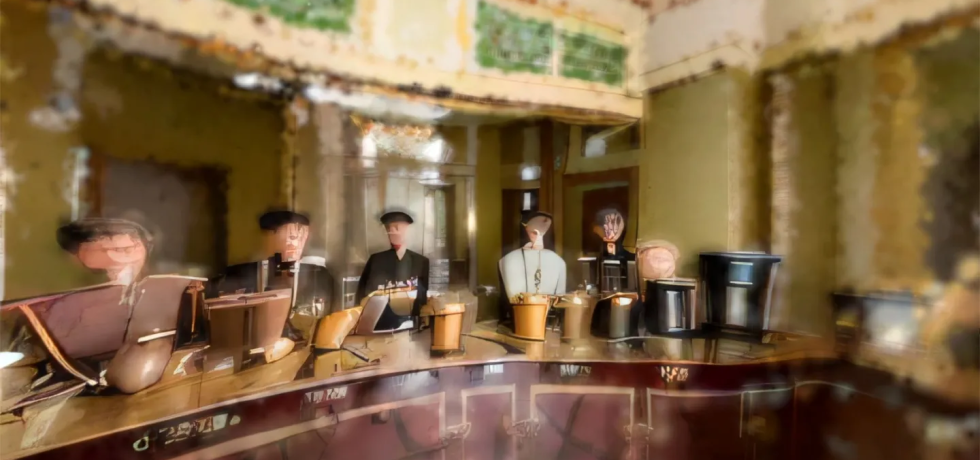Voidopolis
“Like many people, I’d used Instagram for years as a way to document small moments of my private life, or to work out the odd visual idea. But this particular ritual of social media sharing just seemed disjointed from all the loss happening around me. How do you document absences and vanishings? And then one night in June, I quietly deleted seven years’ worth of posts from my Instagram feed. It was an eerie feeling. It’s not what you’re supposed to do on Instagram. Was I sure about this? Well, I was sure whatever stories I was going to tell about this time were going to require a very different mode of telling.”
—Kat Mustatea
Voidopolis is a hybrid artistic and literary work that takes the form of a printed book and an augmented reality app which together retell Dante’s Inferno as if it were set in pandemic-ravaged New York City. The app has a limited lifespan, decaying over time; the book is already decayed. They recast Dante’s story as a dystopian experience of wandering through a modern hellscape, guided not by Virgil but by a caustic hobo named Nikita.
The subject of the work is loss. Its images were created by digitally “wiping” humans from stock photography. Its text was generated by a GPT-2 text generator modified to generate only words that lack the letter “e” — an homage to A Void (originally published in French as La Disparition, “The Disappearance”), a 300-page novel written without a single “e” by Georges Perec, a member of Oulipo, the loosely organized literary and mathematical society whose members experimented with different forms of constraint in the 1960s and ’70s.
Voidopolis, adapted from a series of Instagram posts that were ultimately deleted, is also designed to disappear: the book’s garbled text can only be deciphered with the AR app, which decays over a period of one year. Each July 1, the date the project first started on Instagram, the app resets, beginning the cycle of decay anew. At the end of each cycle, only the printed book, with its unintelligible pages, remains. Voidopolis speaks to the fragility of experience, reality, and our connection to one another.
INTERVIEW WITH THE AUTHOR
Excerpted from “A conversation with Kat Mustatea, author of Voidopolis,” The MIT Press, October 12, 2023. Copyright © 2023 The MIT Press. Reprinted with permission. Kat Mustatea’s Voidpolis is published by The MIT Press.
The MIT Press: The guide throughout Voidopolis is Nikita, a caustic hobo roaming the streets of pandemic-ravaged New York City. What drew you to retelling Dante’s Inferno in this hybrid form, and how has Nikita’s perspective affirmed or challenged your understanding of this epic?
Kat Mustatea: I read Dante’s emotional and rhetorical argument at the core of the Inferno to be something like: “In my darkest hours, Virgil’s poetry was my comfort and guide,” or maybe more broadly, “Poetry can light the way in a dark world.” Nikita was my antidote and guide for a world suddenly askew, as I witnessed the collapse of what I—along with New York, with the world—understood to be the basic building blocks of daily life and of reality itself. Nikita’s sarcasm, his unconcern for the niceties and strictures of polite society, his meandering literary aspirations, his poor diet, are a quiet form of dissent, a refusal to participate in the collapse, failure and constraint of the world around him. His sarcasm is a way of scratching at the corners of the veneer of power to see how much will peel off.
MIT Press: For this project, you edited the output of GPT-2 generated text. How did you decide what to augment in GPT-2’s output? Could you elaborate on how this way of writing was informed by your experience of the pandemic?
Mustatea: I had been tinkering with the idea that GPT-2 could be modified to generate grammatically coherent sentences using only words that do not contain the letter “e.” The Oulipian experiments with language and mathematics from the 1960’s and 1970’s seem to me direct precursors to the age of artificial intelligence. Just before the pandemic, I had a modified model that could even generalize on Perec’s constraint, to omit any letter or group of letters I chose.
That tool might have remained something of a parlor trick had it not been for the pandemic. Daily life under lockdown suddenly became a series of avoidances, constraints, and workarounds for things no longer possible to do, and here I had in hand a technique for embedding a palpable sense of that loss, a way to evoke the missing people, the stilled traffic, the vanishing of the markers and measures of everyday life. Ultimately, “e” was the letter I chose to omit because regular past tense verbs in English end in “ed,” and removing the past warped the narrative with a quality of being out of time, out of history.
“‘Voidopolis’ is at its core an oblique parable and guidebook for surviving cataclysm at any scale, whether personal or global.”
MIT Press: Voidopolis began as a series of Instagram posts before being adapted into a book-length project; your artist statement discusses how “book-making was bound up in the workings of memory” in contrast to deleting all of the original Instagram posts. Could you discuss how memory functions in this project?
Mustatea: I thought of the story unfolding on my Instagram feed as a performance, with the comments and likes received on each post a form of applause. Wiping it away once the story was complete was an argument for the collective amnesia needed to heal following such a cataclysm. The impulse to make a book was to document that the story had existed at all, similar to the way a catalog documents an exhibit. Is a book that much more permanent, though? I’m not so sure.
Every aspect of the book’s design was carefully considered in terms of the workings of memory. The algorithm that decays the digital AR imagery has a tactile, milky quality meant to evoke the way memory erodes the sharp edges of a moment. Because we remember images and language differently, the treatment of the text is based on the idea that I might remember a particularly luminous turn of phrase in a poem long after I’ve forgotten the full text.
MIT Press: While augmented reality is thought of as an additive process, Voidopolis is inherently subtractive as it generates decay and wipes away stock photos of its human subjects. How does this tension inform the project as a whole?
Mustatea: Voidopolis isn’t quite a book, is it? It’s a performative object. The AR components work to reproduce the sensation of loss rather than illustrate or describe loss. If there is an artistic lineage here, it is probably Bansky’s infamous shredded painting, in the way the AR components enable an active disappearance, both giving and taking away the story.
By design, the digital AR components are unstable and contingent. The book threatens to disappear. But the reward of this delicate setup—and I think this an important aspect of the poetics of Voidopolis—is that you witness the book’s deterioration over time along with every other reader, in real time, worldwide. Reading a book is a private act; we rarely think of it as a communal experience. The pandemic created a collective experience we had while individually isolated from each other, and Voidopolis does something similar in book form.
MIT Press: It has been three years since the start of the COVID-19 pandemic. What do you hope that readers gain from reflecting on this experience?
Mustatea: Voidopolis is at its core an oblique parable and guidebook for surviving cataclysm at any scale, whether the personal or the global. Going about daily life, we tend to take for granted how utterly fragile everything is; how life can simply come to a halt; how societies, however formidable and complex, can collapse. I hope Voidopolis can function as a reminder that while our connections to one another are tenuous, ever contingent, nevertheless we cling to one another, we form cities, we make artifacts in hopes they will be meaningful to what generations come after. If the story offers a depiction of how our world might look in this collapsing, the book’s very existence is a way of resisting that collapse.
 Kat Mustatea is a playwright and artist working at the forefront of live performance and cutting-edge technology. Her experiments with language and new forms of narrative enlist absurdity, hybridity, and the computational uncanny to dig deeply into what it means to be human in the digital age.
Kat Mustatea is a playwright and artist working at the forefront of live performance and cutting-edge technology. Her experiments with language and new forms of narrative enlist absurdity, hybridity, and the computational uncanny to dig deeply into what it means to be human in the digital age.
Her TED talk, about AI as a form of puppetry, offers a novel take to the meaning of generative art-making. Her work has been presented at a variety of venues, including Ars Electronica in Austria, the New Images Festival in Paris, the Stanley Picker Gallery in London, and New York Live Arts. She is currently an artist member of ONX Studio, funded by the Onassis Foundation, and has recently held residencies and fellowships at TED, the New Museum art incubator New Inc, Harvestworks Digital Media Arts Center, the Orchard Project, and New York University’s ITP/IMA Program.
Born in Bucharest to Romanian / Ukrainian parents, Mustatea immigrated with her family to the United States as a child in the 1980’s, among the few able to leave Romania during the Ceausescu regime. She lives and works in New York City.
